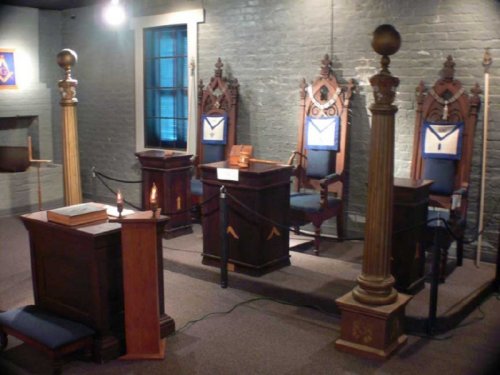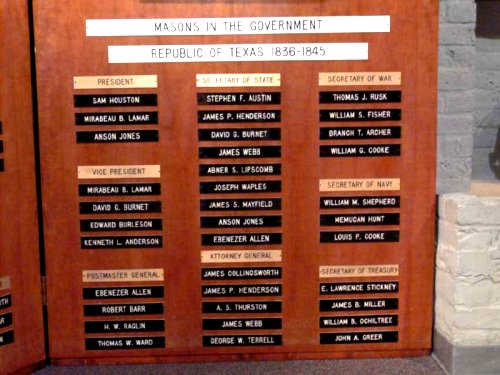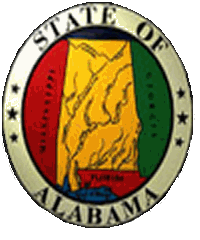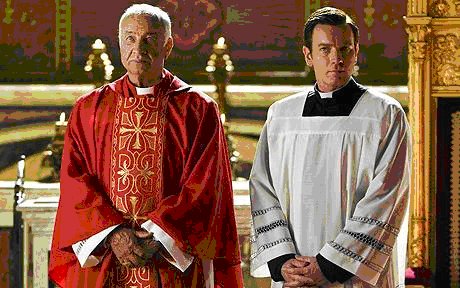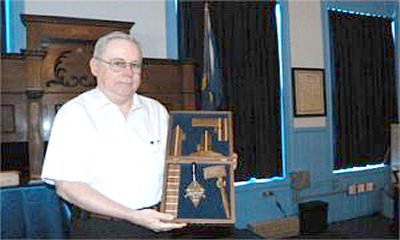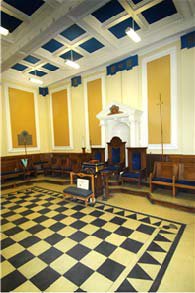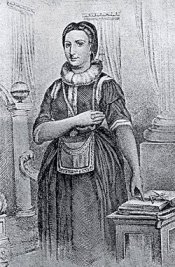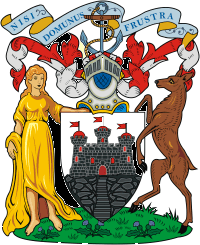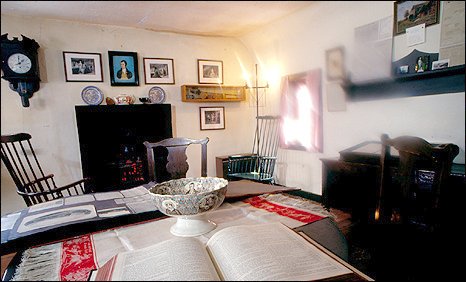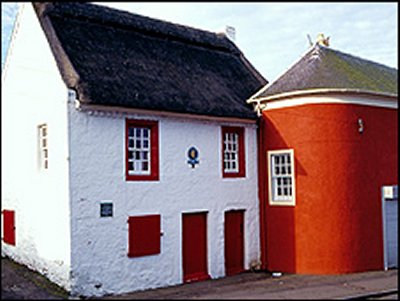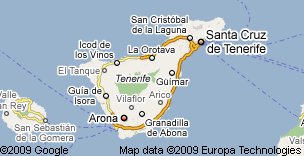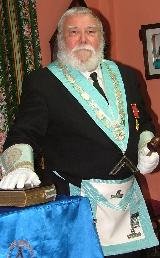
|
May 2009

Spring Masonic Lodge #1174 AF & AM
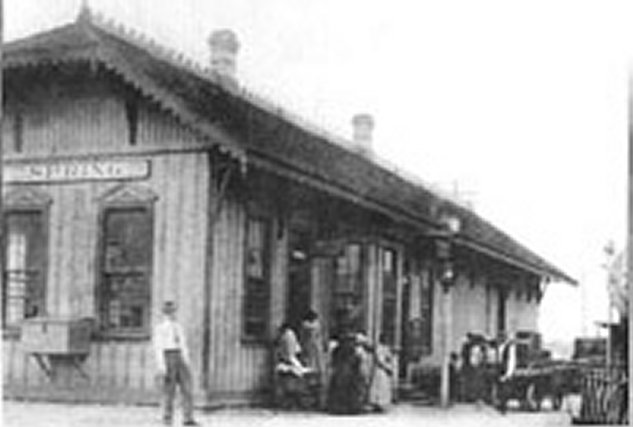 The Depot In The Middle Of Spring, Texas - Circa 1910 - Courtesy Of John Robinson.
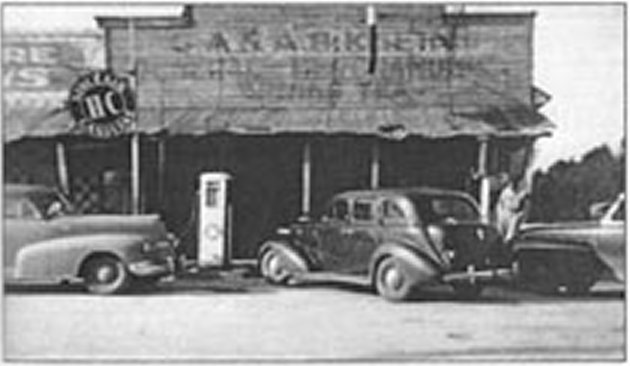 Mobley's Store - One Gas pump And The Only Phone In Spring, Texas - Circa 1950 - Courtesy Of Dora Mobley. |
|
Page II | |||||||||
|
This Small Town Texas Mason's E-Magazine is not affiliated with any state Grand Lodge or individual Blue Lodge. It was created to enlighten, educate and entertain Masons and non-Masons alike and as title suggests, it does feature a small town Texas Masonic Lodge and a story of Texas Masonic history in each issue
A very sincere effort was made to avoid using any copyrighted material, without permission or giving credit to the author, in the creation of this web site. If you discover something that is yours, without giving you due credit, please let me know and due credit will be given or the item will be replaced.
Any material in this site may be used to increase the understanding of Freemasonry.
Story tools: |
Spring Masonic Lodge #1174 AF & AM
Masonic Happenings in South Texas
A Tour Of The American Grand Lodges Series
'Angels And Demons' Producers Defied Vatican Ban
Culpeper Masons Open Door To History
Freemasons In Scotland Admit Women Members To Masonic Club
Masonic Education - Who Is Responsible?
Following The Footsteps Of The Past Brethren
Despite Segregation, Lodges Linked Races
What Is A Cornerstone Laying Ceremony?
| ||||||||
|
Page VI | |||
The Grand Lodge Website Of Alabama Reprinted With Permission Of The Author
Alabama Masonic membership:
30,952 - 2006
State population - 4,627,851 as of 2007,
About the Grand Lodge:
Founded June 11, 1821, previous charters in the state had been issued by the grand Lodges of Kentucky, Georgia, South Carolina, and Tennessee. Alabama is one of a few states to have a Wikipedia entry with this information.,
The website is very straight forward in that most of the active links live right on its front page. The site is built on a simple HTML architecture which allows some flexibility in the overall structure and content. The plus is that if there is a desire to add something, it just needs to be hand coded in, the down side is that it needs to be hand coded in which can be time consuming for the coder. I tip my hat to the person maintaining the site, as I know the monumental challenges that it can be to manage just such a project.,
The Grand Lodge of Alabama website,
Some of what I found on my excursion there:,
At the time of my visit on March 18th, there were three updated messages, two of which were from January 2009, and one from December of 08.
From the main page, there is a wide selection of links and content to spend some time on. I did find the “how do I” link an interesting addition to help those not familiar with how to navigate a web site to find what they be interested in finding. Some may overlook this or trivialize it as unnecessary, but with an older member base unfamiliar with the web this could be an excellent tool to guide users through the operation. The “how do I” list covers everything from reporting a members passing to finding lodge events. This latter item is an excellent feature and precursors to a state calendar, but it keeps those interested in knowing what is going on informed.
The only draw back to some of this deeper site navigation was the inconsistency of the page layout from the sites original style and layout navigation. This is purely a cosmetic function though as the content is pertinent. I mention this as these aspects are important when visitors are perusing the site and want to jump around to various locations.
From the top level site, another inconsistency I found is the diversity of file types being linked to. What I noticed were links to PDF’s, text files, word files, and other off site links for information. In some situations this practice is ok, but unless the originating site has consistency, it interjects another random element into an experience. An option may be to translate the various file types right into text and drop it into the HTML. That way all the info is searchable and simple to pull.
One thing I will say about the site is that it contains a lot of information and that it has a site map. So if you are really looking for something, you can go right to the map to find it.
My only disappointment in the site is that it doesn’t say much about Masonry’s relationship to the state or to its members. This is more of an aesthetic opinion about the site rather than a functional one, when looking at it through the eyes of a first time visitor, especially in a state as vibrant and beautiful as Alabama. There isn’t much visually to say “this is Alabama Masonry” which misses the opportunity to hammer home the first impression from the digital enquirer.
Another area of concern, to me, is the degree of personal information posted on some of the pages. Again, this a personal call but it leaves open the opportunity for spam or unwanted correspondence.
One question that the site does not seem to readily address is a strong answer to the 2be1ask1 invitation. In the event that a young Alabamian man ventures into the site, there is not an immediate means to get more information, or to have the question of “who to ask” in the 2be1 proposition.
Overall, the site is sound and communicates what it needs to communicate. What seems to be missing is just the flavor Alabama Masonry.
Next - the Grand Lodge of Alaska
|
|
Page VII | |||
|
By By Nick Squires in Rome
Telegraph.co.uk
The makers of the new Dan Brown film, Angels and Demons, digitally recreated the Vatican by posing as tourists and taking thousands of photographs of St Peter's Square after being banned from filming there by the Catholic Church. The undercover operation enabled producers to faithfully reproduce the Holy See, where much of the action in the film takes place. The thriller, which has its world premiere in Rome on May 4, stars Tom Hanks as Harvard symbologist Robert Langdon racing against time to unravel a plot to destroy the Vatican.
"The ban on filming put us in serious difficulty because we were not able to carry out the photographic surveys necessary to reconstruct the setting," special effects supervisor, Ryan Cook, told an Italian film magazine. "So for weeks we sent a team of people who mixed with tourists and took thousands of photos and video footage." The photos and film helped digital effects specialists recreate computer-generated images of the imposing statues, colonnades and monuments which encircle St Peter's Square, right down to the shadows they cast on the ground. "We filled the square with a huge crowd, created mostly with digital figures, some standing still, others moving, clapping their hands or scratching their noses," Mr Cook told the magazine Ciak. Ron Howard, the director, also had a scale model of the Vatican built in a film studio in Los Angeles in order to get around the Vatican's ban on filming. He hinted in an interview in December that he had used a spot of subterfuge to complete the film, which is a prequel to The Da Vinci Code. "We didn't shoot at the Vatican officially. But cameras can be made really small," he told an American television programme, Shootout. The challenge of filming interior shots was overcome by using the grandiose halls and sweeping staircases of a former royal palace at Caserta, near Naples. Angels and Demons, which Brown wrote before The Da Vinci Code, follows Langdon as he tries to stop a suspected plot by the Illuminati, an ancient secret society, from destroying the Vatican. In announcing its prohibition on filming last year, Archbishop Velasio De Paolis, head of the Vatican's Prefecture for Economic Affairs, said Brown's books were blasphemous and "turned the Gospels upside down." Father Marco Fibbi, spokesman for the diocese of Rome, added: "Normally we read the script, but this time it was not necessary. The name Dan Brown was enough."
But the Vatican will have to brace itself for fresh indignation – Brown's long-awaited follow-up book, The Lost Symbol, will released in September. It has an initial print run of five million copies and explores the origins of Freemasonry.
| |||
|
By Nate Delesline III Star Exponent.com Culpepper, Virginia
Chartered in 1794, the Fairfax Lodge No. 43 of the Ancient Free and Accepted Masons is one of the town's oldest institutions. Saturday, the members opened the lodge to the public as part of Remembrance Days, a weekend of activities and celebrations marking the town's 250th anniversary. Remembrance Days activities continue today across the area with activities at the Museum of Culpeper History and Culpeper Regional Airport, among other locations. Located at 209 E. Davis St., the Mason building dates to about 1900, said Lawrence Whitehurst. The Worshipful Master, Whitehurst is the Culpeper lodge's top officer. Freemasonry, or Masonry as it's also known, is a fraternal organization that traces its origins to the middle ages. Many Mason organizations today trace their roots to England in the early 1700s. The English carried their traditions to what later became the United States. The traditions continue in America and around the world today. Their traditions include supporting individuals in need and charitable causes through financial donations and service. Whitehurst, a Culpeper family practice doctor, said the Masons have worked hard in recent years to diminish their reputation as a closed, secretive organization, hence the decision to host Saturday's open house. “In Free Masonry now, we have very few secrets,” he said. In the past and today, “If you could keep a secret, it's a sign that you had integrity,” Whitehurst said. Today, he continued, there are only a few traditions that are withheld from non-members for the sake of building camaraderie and fellowship. The second-floor lodge's main meeting room features a dark blue carpet, matching leather chairs and dozens of symbols of Mason tradition including a sword, pillars and an altar. On the walls hang portraits of prominent Masons, including Virginia native George Washington. A kitchen, informal gathering room, offices and a study library complete the lodge. About 125 members participate in Culpeper's lodge and all Masons around the world are encouraged to visit other lodges, Whitehurst said. Just down the street, at the corner of Davis and Commerce streets, a different tradition was in full swing. Saturday also marked the first farmers' market of the season. “We like coming here,” said Scott Barnhart of Pleasant Hill Farm in Rixeyville. “There's lots of regulars.” In addition to Pleasant Hill's naturally raised poultry and eggs, locally grown vegetables, fruit, flowers, crafts and honey are usually available each weekend.
The market runs each Saturday from 7:30 a.m. until noon.
| |||
|
Page VIII | |
By Natalie Bruckner
"You're probably one of the very few outside of Freemasonry who've seen it like this," says Michael, looking a bit un-nerved. "Oh well. This is an initiation process that will be going on tonight that recognises the building of the second temple."
It's like stepping into the Alice in Wonderland chess game.
In front of this is what looks like a king's chair where the master of the lodge sits, either side are two small royal looking chairs.
Michael, who's been a Freemason for more than 30 years and was educated by the Freemasons' Boys Trust after his fa-ther died in 1937, says that when people are initiated, they are blindfolded and led into the room.
It sounds rather daunting.
And yet 330,000 people currently living in England in more than 8,000 lodges have at one time or another gone through this very initiation.
But numbers of new recruits are falling.
Freemasons fear that the UK largest fraternal organisation is losing its appeal.
It doesn't help that Freemasonry has found itself under attack from groups who find the fraternity sinister.
To most people, Freemasonry is a bizarre grown-up boys' club, where grown men roll up their trouser legs in the name of old-fashioned beliefs.
When the Freemasons opened their doors to the public in 2002, they hoped it would dispel the myths that had plagued them for so long.
Instead their motives were questioned.
Today, to emphasise they are not so-called Satan worshippers or that they practise nepotism, the Freemasons have de-cided to release information to the general public about their fund raising activities.
Over the past five years Freemasonry has raised more than £75 million for charity.
I'm joined by Rodney Dale. He became a Freemason 35 years ago, at the age of 32 after his boss introduced him to the fraternity in London. Now he's a member of the Bournemouth Masonic Group.
Rodney says: "It's done so much for me as a person. There are all these misconceptions surrounding Freemasonry; this is why we feel the need to tell people about the good work we do."
Until now, Freemasons have kept their fundraising activities under wraps, giving anonymous donations.
"We felt charity was personal to us - but we need to be a little more open about what we do, in the hope that we get bet-ter press.
"In June the Bournemouth Masonic Group held its fourth annual celebration evening and presented over £24,000 to 50 charities and worthy causes."
At best, this latest gesture aims to attract people back to the fraternity, at worst, it hopes to eliminate the negative publicity.
Rodney says: "It tends to be difficult to persuade people to join. They've got more commitments and maybe we haven't sold ourselves as far as the benefits of joining are concerned.
"We have to ask, is Freemasonry relevant to today's society?
"We're looking at ways of making it more interesting, but there's not an awful lot you could do or would want to do."
Over the years the Freemasons have tweaked their practices to try and move with a changing world.
Gone are the black ties and the symbolic physical penalties, which were removed from the promises in 1986. But little else has changed.
At one time Freemasons' sons would proudly follow their father into Masonry - today many of the younger generation just aren't interested.
Rodney says: "People laugh at Freemasonry, with the rolled trouser leg - they think it's a bit of a joke. It's not a joke to us.
|
|
Page IX | |
Continued From Page VI
"There are female Masonic groups, but they aren't recognised by The United Grand Lodge of England."
Rodney also believes that when it comes to financial matters, there's this misconception that you have to be wealthy to join. He says times have changed, but financial pressures still put people off.
Rodney says: "In 1908 the only people who could afford to become Freemasons was a small sector containing lawyers, policemen, solicitors - that's no longer the case.
"You give to charity what you can afford. We pay £125-£135 a year for subscription to the lodge, and for a four course meal we pay £12."
One of the biggest issues surrounding myths in Freemasonry is nepotism. Many believe that people join to further their career.
Rodney vehemently denies this, saying anyone wishing to join for those reasons would be dismissed.
As I wander around one of the great halls in the Knole and look up at the walls, I can't help but wonder whether this has always been the case.
Plaques on the walls feature past Freemasons from local lodges. 15 ON THE WEB AT WWW.TWTMAG.COM 15
A quick glance and I've clocked quite a few names from the local business world.
Michael points up at the walls and says: "That's Sydenham, the timber and building merchants, Fox in 1922 from Fox and Sons estate agents, Harding from what was Goadsby & Harding estate agent and Beale in 1930 from Beales Bourne-mouth store."
The members are proud to have these names as part of their history.
I ask Rodney whether members have helped each other out.
Rodney tells me that the rules state that misuse of membership regarding material gain results in Masonic discipline.
Flick through their book of constitutions and you'll find a chapter that states strict rules governing abuse of membership can result in penalties varying from temporary suspension to expulsion.
I ask whether this is fair considering members of gyms, for example, will use an acquaintance for a job over a stranger, and would this not be the same thing?
Rodney nods, but doesn't expand. It seems Freemasons have to be on their guard.
A negative connection to Freemasonry is instantly highlighted in the press. Rodney says this is partly why Freemasonry went underground.
He tells me that a demand to declare membership created an inverse situation a few years back.
Michael explains: "It's very tricky. I worked in the courts and I know people in senior positions who were asked to de-clare if they were a Freemason. Fortunately it was stopped in the end.
"We do object if we're discriminated against. If people ask any employee to declare their membership, there's this fear that if you're a Freemason you will bend the rules and give favours to other Freemasons."
As I wander around the Knole and meet various members, some of whom work full time organising events and charity donations and others who just enjoy being part of a group, I wonder whether there is anything sinister left in Freema-sonry, if there ever was.
Rodney says: "It's a secret organisations and we want to maintain an element of mystery - that's part of our appeal - but that makes people suspicious.
"Ultimately we're all about maintaining standards of behaviours in a society where standards are dropping.
"Ultimately it's a support network. But attracting new members is difficult. After all, no one will print something that says Freemasonry broadens your life and expands your vision."
|
|
Page X | |||
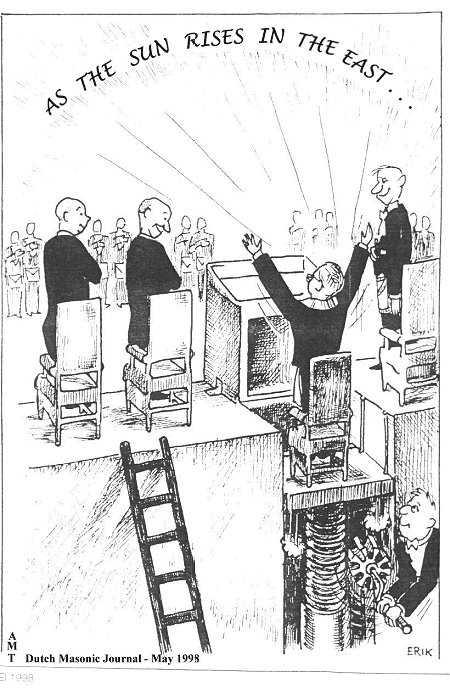 |
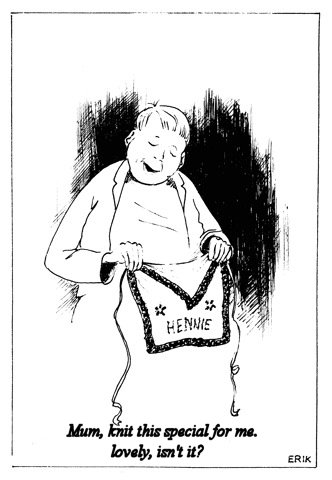 | ||
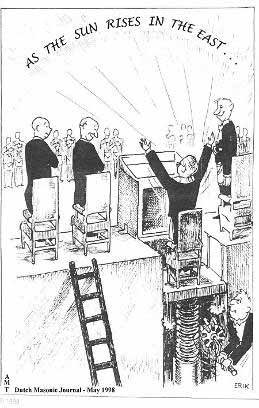 |
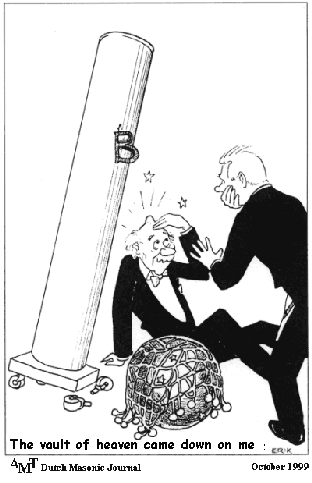 | ||
|
By Oliver Farrimond Deadline Press & Picture Agency Edinburgh, Lothian, UK
Editor: The Masonic Club is not a lodge.
The first women members will go through the club’s doors on 1 April, and the club are anticipating a huge surge in membership. James MacLean, club secretary and treasurer, said that over 800 women were expected to sign up. He said: “It’s the big break through - we’re admitting lady members for the first time. “The provisions of the Scottish licensing act 2005, which are coming into force this year, led us to review our constitution. “We reckoned that if we don’t adapt we’ll start being seen as dinosaurs.” The occasion marks a milestone for the club, which is based at Shrub Hill in Leith, as until now women had only been allowed in if accompanied by their husbands, and even if permitted to enter the club, they had to sign in as visitors. Decision not taken lightly The planned membership fee is only half of what a man pays, and ladies will not enjoy the privilege of voting on club business. The Edinburgh Masonic Club has a unique constitution, whereby all members must be masons, but not all Edinburgh masons can join.
The Shrub Hill freemasons also have another reason to welcome a flood of new, paying members - the club
are eyeing relocation to a new site on the face of Leith Walk. James MacLean, who has worked as club secretary
as treasurer for over 30 years, said that the decision was ten years in the making and had not been
taken lightly. He said: “There were more than a few voices of objection when we proposed the motion to
allow women members for the first time. “I told them that I did not perceive that continuing with the current
status quo was an option.” He added that although women would not be permitted to vote in Masonic
matters, they would still have a say - albeit indirectly. He said: “They will have some kind of say, I feel,
because they cajole their men when it comes to casting a vote.” | |||
|
Page XI |
By Brother Robert L D Cooper
It has become something of an industry – books about Freemasonry and which are available to the public. Often written by non-Freemasons their treatment of the subject can vary enormously. They often very speculative, and can be sympathetic, or not, accurate or not, positive or negative, historically accurate or way off-beam. The fact that they exist, and in such huge numbers, and are produced seemingly from a production line immediately tells us something - there is a huge demand for a material about Freemasonry. So who buys all of these books? - we do, of course! This means that there is a more or less guaranteed market. I suspect that non-Masons who buy these books are considered to be icing on the cake' – in other words it is we Freemasons who are the target market. This phenomenon first appeared in its modern form about 25 years ago and has accelerated in the size and number ever since. The book Holy Blood and The Holy Grail' (1982) was the first of these modern, speculative, books which touched very briefly on Freemasonry, but it was The Temple and The Lodge' (by the same authors), which started the ball rolling in 1988. The success of such books has meant that the publishing industry has produced a juggernaut and which shows no sign of slowing down although recently it may have changed direction – of which more later. Many of these books deal, to a greater or lesser extent, with Freemasonry in my country - Scotland. Almost without exception, they do so from a historical point of view, and none so far as I can tell, discuss Freemasonry as it presently exists in Scotland. This again tells us something very important - it is far, far easier to write books about the past than it is about the present - there are people around today to argue about today's facts whereas there are no Freemasons from 100 years ago, to argue with the author writing today about them, what they did and what they believed. This also ensures, unfortunately, that most modern writing on Freemasonry is backward looking. This does not provide Freemasons today with any kind of vision about what Freemasonry ought to be in the future. It certainly does not assist in educating and encouraging Freemasonry about the Craft today and rarely provides Freemasons with information as to what Freemasonry is about'. There is, for example very little discussion in these popular books about the ethos of the Craft and its purpose and function in society. Instead we are treated to mystical mumbo jumbo about our part that has no apparent relationship with Freemasonry today. One reason why a historian studies the past is to attempt to perceive the future and to enable people to avoid making the same mistakes made by out forbears. Yet Masonic history is rarely used for this purpose. Why? It is perhaps the useful to mention here that writing about Freemasonry can be divided, roughly, into two types' - popular which writing usually is produced for sale in the public domain and material such as this paper, which is produced for private (or at least, semi-private) consideration by Freemasons. Of course, this is an artificial division for the purposes of argument, of course it is well known that some writers produce material of both types'. It is surely significant that hardly any of the popular writers, produce material for journals such as this for which they would receive no payment. This phenomenon is, however, nothing new. Many popular authors, Freemasons or not (and of those that are none are Scottish Freemasons) discuss specific subjects within Freemasonry - ritual, origins, symbolism, famous Freemasons, etc. The first publication about Freemasonry, which was intentionally sold to the public was Freemasonry Dissected' by Samuel Prichard, which was published in London, England, in 1730. He claimed to be a Freemason, but did not give any details of where he was initiated or the name of his lodge. He explains the reason for publishing the ritual in the following manner: In other words, he attempts to justify (to Freemasons) why he is selling the ritual to non-Freemasons. But if he were genuinely concerned, as he claims to be, one wonders why he did not give it away for free. That question remains un-answered today and is applicable to some modern authors. Prichard's work was essentially theft - and a cheeky one at that – after all the ritual was already owned' by Freemasons. He printed and repackaged it and then sold it back to them! Publications have such as these are known to us as Exposures' and they continue to be published today principally by non Masons who have made them widely available through the Internet. Although making money from such Exposures' it is often claimed that the real' reason for publishing them is in order to expose' the evil, criminal, ungodly, corrupt, immoral, (etc., etc.,) practices of Freemasons to stop the unwary from being lured in the Craft. This returns us to Prichard's self-justification offered to us more than 275 years. That he historian, I find this more than a wee bit amusing - it has not destroyed Freemasonry despite the repeated publication of these exposures throughout that period. Inevitably, mammon is really the reason for these exposure' and their publication proves, sadly, that they continue to sell. In any event, the Masonic historian can benefit from this situation. For example, there is a web site which provides a huge number of different Masonic rituals from all over the world. What a great resource because it allows us, for example, to compare rituals from different countries from different times. It can also allow us to track changes and developments in ritual over. It would have taken me a very long time to acquire hard copies of all the ritual is available on that website and even if I did manage to obtain them all it is very unlikely that I could have converted them all into electronic format. I e-mailed the owner of the web site to thank him for the service he provides to Masonic historians such as myself. I did not receive a reply – I wonder why? I know of some Research Lodges that have downloaded and printed these rituals for all of their members thereby saving considerable sums of money. They too thanked to the owner of the web site but received no response. This reveals a difference from the time of Prichard. Non-Freemasons of 270 years or so ago were not all that inter-ested in Freemasonry per se. Writing about Freemasonry was an activity for Freemasons, by Freemasons. The last 20 years or so has seen a huge amount of material being written about Freemasonry and even Prichard falls into this category as the bulk of his sales were to Freemasons. The last 20 years of so has seen a huge amount of material being written about Freemasonry by non-Masons for non-Masons. Perhaps we can now begin to understand why and how Freemasonry has come to be grossly distorted in the public's perception - because popular books do not inform them accurately as to what the Craft is, its purpose and its ethos. However, we only have ourselves to blame – we have allowed this to happen. We Freemasons have not satisfied the obvious demand for information about the Craft. Instead, we have allowed popular writers, Masons and non-Mason alike, to do that for us. Let me put this in another way. Imagine if Microsoft produced no instructions whatsoever about how to use its software. For people to use the software they would be forced to buy whatever third party instruction manuals were available - whether they were good, bad or indifferent. Grand Lodges produce' Freemasonry (the software), but it does little or nothing to explain how to use that software. Enterprising authors, good, bad or indifferent, have stepped in supply the demand. That is the problem, is there a solution? There is, but if not an easy one. Perhaps it is time to retake what is already ours and take the responsibility of educating our own members instead of leaving it to others? I am of course well aware that some Grand Lodges do just that and therefore these comments are a generalisation but the fact remains that there is no comprehensive system of Masonic education. One reason, arguably the principal reason, is because every jurisdiction is independent and can educate (or not) its members however it likes. Another problem, I believe, lies with the structure of Freemasonry itself and the way that structure does not mean the demands and needs of the members. For the purposes of this paper I divide Freemasons into two distinct groups one which I shall call the Administrative class and the others the Philosophical class. I acknowledge that this division is crude and that there are a huge number of Freemasons (some would say the majority) who fall into neither class nor does it take account of the small number that are of both types. The Administrative class holds all the decision making power whereas the Philosophical class have none. That is an observation not a criticism for administrators are needed to run' Freemasonry. This is usually done as a business however successfully or not.
|
|
Page XII |
Continued From page IX
The other group, recalls that Freemasonry did not, and does not, need large sums money in order to function, does not need large numbers of members to exist, and does not need to own buildings in which to hold meetings. Information about Freemasonry (be it historical, philosophical or even, dare I say it, spiritual) tends to be sough by those of the Philosophical class and is not generally of interest to those who administer the Craft and who therefore do not provide material of interest to the other group. There is therefore a disconnect between the two classes. The supply, by third parties who often are not Freemasons, is I believe but one worrying manifestation of this. Reconnecting these two groups in terms of their needs and aspirations would be an important advance although I suspect that the benefits would not be apparent for some time. That brings me to the juggernaut' mentioned earlier. The market for books, articles and even movies is enormous and well estab-lished and whatever we do within Freemasonry it is unlikely that this situation will change. Perhaps then the direction of the juggernaut' needs to be changed in our favour. We need to take change of it and turn the steering wheel in the direction we desire. Some signs that this is already happening can be seen from authoritative books being published by recognised Masonic authors (those S. Brent Morris and Mart Tabbert spring to mind). If enough Freemasons are encouraged to write and research the Craft then the more likely it will be that good quality material will find its way into the bookstores and the third party mumbo – jumbo stuff will be squeezed off the shelves.
One final thought for you to consider when you next purchase a book which discusses Freemasonry. Having bought it and read it and have concluded that it is absolute rubbish what will you do with the book? I am sure that, like me, you will simply put it on your Masonic bookshelf' - you certainly will not take it back to the bookstore and ask for a refund! Now you why there are so many people out there who are willing (if not able) to write so many books about Freemasonry!
Robert L D Cooper is the Curator of the Grand Lodge of Scotland Museum and Library and an Honorary member of the Walter F. Meier Lodge of Research. Brother Cooper has recently has had published two books on Freemasonry – Cracking the Freema-sons' Code and The Rosslyn Hoax? (see: www.rosslynhoax.com) . The views expressed in this paper are the authors alone and do not necessarily reflect the views of the Grand Lodge of Scotland or any other Masonic body of which he is a member.
|
|
By John "Corky" Daut PM Editor STTM E-mag
Most Masonic Lodges I have known or heard, estimate that only about ten percent of their membership attend the meetings.
I wonder what attracts that 10 percent to attend the stated meetings at your Lodge. Is it visiting with your Brothers, listing to how much money the Lodge spent for the light bill and stamps this month, or maybe hearing who's sick or has passed away, or is having a free meal or just getting out of the house for a while the answer. I guess I'm a member of those ten percent. I haven't missed but a couple of meetings in the past ten years, so I guess I can claim most of the above reasons, but the main one is because I really love Masonry. Perhaps, a better question would be to ask the other ninety percent of the membership, why they don't attend stated meetings and an even better question, would be what could attract you to attend more meetings? We are taught that the main purpose of Freemasonry is, "We make good men better". Are we doing a good enough job of continuing to "make good men better" after a Brother has worked through the first three degrees? Ask a fifty year Mason in your Lodge what he has been taught at a meeting in his last forty nine years? The main question is still, are we missing something? Have we been taught anything after being raised? Freemasonry has many, very knowledgeable speakers on Masonic subjects, who love to speak about their specialties or interests. Even if you don't have a particularly knowledgeable speaker available in your area, there are thousands of informative and educational Masonic papers in books and on the internet that could be printed off in a minute or two and read at a stated meeting. Many Grand Lodges have a section on their web site for stories of Masonic history, famous Masons, your state's Masonic heroes or outstanding Brothers. Advertise in your newsletter and inform the members at the meeting that at the next month's meeting, Brother X will speak on X.
Give your meetings something besides listening to the boring minutes of the last meeting, how much the light bill and stamps cost last month and who is on sickness and distress list and they will come. |
|
Page XIII |
Aurthor Unknown
This is a great motto, if used properly, but lodges can quickly lose the meaning and spirit of this fine reminder if it is not monitored constantly by all brethren. I have been to many lodges (even my own) where the brethren tout these words, but do not make any attempt to live them.
Listen up, Brother Masons:
To make good men better, it takes "better men" to be role models for the "good men" to see and learn from.
We are all part of this imperfect lodge, which prevents us from always being the model we should be all the time, but our charge is to learn to be as perfect as possible. How can we accomplish this if we do not make any attempt to "mind our manners" when in the lodge, or fraternizing with other masons?
Should you meet a mason for the first time on the street you would not address him with distaste, nor would you choose to tell him racist jokes or negative things about your lodge. Of course you wouldn't, because you are proud of your lodge! If you do any of these things in your lodge, are you not defacing the very thing you have sworn to uphold?
For those who have yet to mature into the world, here is the Masonic warning: This is not high school, college, or a "frat". It is not a place where you "let your hair down", or tell lewd jokes at the expense of another to make yourself feel more important.
It is a place where masons "meet to work"; a place meant to be a haven clear of all negatives toward each other, a place to model who can best work and agree.
What is good for the lodge?
o Fellowship - We should greet each other when possible as we enter the lodge. This should be the job of Entered Apprentices (and/or FCs) so that they can learn the names of other brethren in the lodge, and begin to make bonds with visitng brethren.
o Friendship - Brothers should have the contact numbers of all masons in their lodge in order to make contact with any they choose. To withhold a cell number from a lodge brother is essentially saying that you do not trust him. (Shall we continue?)
o Role Modeling - All Master Masons are role models for EA's and FC's. That is a plain, simple fact. Any Master Ma-son should be willing to take charge of a brother EA or FC and help him. That is an obligation, not a suggestion. MMs should also be willing to teach EAs/FCs customs, manners, and remind them of etiquette for functions or introductions. That is the fraternal way, and what we should be handing down to our new brothers.
o Tutoring - Brothers should be willing to teach, listen, or assist the brother who is studying by finding a suitable teacher for him. It should NOT be left to the student to "track down" the teacher…. EVER!!
o Counseling - When a brother who normally shows up to the lodge is absent for an extended time (for no apparent reason) we should be worried about him. A lodge designee should have a list of these brethren, and should be contact-ing them monthly to determine their status, offer help, or to pass that request on to the lodge in case another brother can provide the service. We help our own first, and we worry about them when they are not with us.
o
o Controlled discussion of differences - Will we always work best or agree? Certainly not, but we should be con-structive about how we solve our differences. Are we ever as ready and willing to take the constructive criticism we dish out? Of course we aren't, so why should we think someone else would like to hear it. Craft your discussions with-out emotion, or just say you don't agree but cannot verbalize it. Don't be petty, rude, or condescending to another mason because you do not agree. Get a neutral party (the Master perhaps?) involved, if necessary, but keep the level of discussion to the point.
What is not good for the lodge?
o Attitudes - Of any kind, please leave them at the door. It doesn't matter if the mason with whom you are fellow-shipping is a lifelong friend, all masons should have the same thoughts in mind when attending lodge. Do what you want outside the lodge, but remember that you represent your lodge when you do ANYTHING!!!!
o Control Freaks - For those who think they run everything… be my guest (because I have been there) but first roll up your sleeves and lead on. Never ask someone to do something you have the time to do yourself, unless you are asking them to help you. Nobody wishes to be ordered around, and I guarantee you that nobody will think very highly of you if you do.
o Discriminatory thoughts, remarks, or actions - These are NEVER to be tolerated in a lodge, whether it be in the Bathroom, Kitchen, Dining room, or Lodge room. We are adults, gentlemen, and we should act like adults… not children! Our physical and mental differences are what make us unique, but not what Masonry is supposed to regard. These things should not be used to denigrate any person, more especially a brother mason. They should be used to understand the
o Blaspheming the Creator's name - This is antithetical to Masonry. Any mason doing this should be taken behind the woodshed immediately. (No joke!) Seriously, this is an offense to many people, and you never know who is going to hear it. Said in reaction to pain is no excuse. Masons should be prepared to reprimand any Mason who represents himself (and the lodge) in this manner.
o Other profanity - Ok, it is bad enough that I have to include this item, because the above should take care of it, but just for those of us who are a little slower….. NO PROFANITY IN THE LODGE, WHATSOEVER!!!
o Lewd or racist jokes - I cannot believe this still exists. I learned them as a child from more racist adults of that age, but as an adult I know they are not proper under any circumstances. I cannot "un-learn" what I learned, so I try to forget them. These have no place in lodges that are trying to mold young men's minds.
Some will most certainly take offense at the above words, and if they knew me would probably convict me of them occasionally. I am not saying that I am on the "high road". I am just as humble as the next mason in trying to conquer the vileness within me. It is my duty to myself to quell those thoughts and actions as much as it is my obligation to aid a falling brother in his reformation.
Please join me in making this lodge, wherever you may choose to display this, full of proud masons who exude the following qualities for younger masons to see:
1. Honor to the fraternity to never to let it be defaced by bad intentions.
2. Virtuous in our lodges, and in our daily lives.
3. Truthful to ourselves about our need to change.
4. Fidelity to our practices, so that younger men will want to be like us.
5. Courage to speak out when others are not following Masonic principles.
6. Loyalty to our brothers in letting them know we care, and are willing to help.
7. Patience enough to wait and watch them change.
8. Humble enough to accept criticism when we falter, or commendation when we succeed.
9. Proud enough to commend the changes we see in our brothers.
Thank you for your help.
|
|
Page XIV | ||||
By Mona McAlinden BBC Scotland news website
Retired railwayman Joe Kennedy describes a palpable sense of history when he and his group of Robert Burns enthusiasts enter the Bachelors' Club in the Ayrshire village of Tarbolton. The group has been meeting in the small upper room of the thatched 17th Century cottage regularly for the past six years, following in the footsteps of the Scots bard, who started his own debating club there in 1780. Joe, an "Ayrshireman born and bred", has Burns in his blood. Like many in an area littered with the poet's haunts and houses, the 61-year-old listened to generations of his family sing and recite Burns' work at parties, and as an adult spent his time devouring the hundreds of poems, songs and letters Burns composed until his death at the age of 37. Joe has spoken at Burns Suppers for the past 15 years, but became disillusioned with a scene in which the poet "tends to play second fiddle". "It had become too commercialised, you only got the well-known poetry and the rest is left behind," he said.
He said: "There are some suppers where, even before you lift the programme off the table, you know you'll get Tam o'Shanter and Holy Willie's Prayer. "I started to get disillusioned by the whole scene. Although there was more focus on his life and works at Burns Club Suppers, at the meetings they didn't want to get into him very deeply. "At one of them a lady was giving a talk about how to pack a picnic basket and another night a man was on about how to do the gardening. I thought then, I can walk away from this or I can try and change it myself. "That's when I decided to set up our group." Joe scoured the back rooms of pubs in search of a venue, but thought it would be special to hold the debates in the Bachelors' Club, preserved as it was in Burns' time. 'Same rules' Luckily, the National Trust for Scotland, which owns the building, agreed. "It's run under the same rules as the original Bachelors' Club, like no silly swearing or excessive drinking," he said. "We have no agenda, it's all off the cuff, we just throw topics out there for debate - we talk about Burns the farmer, exciseman, husband and father - we all learn from each other. "After each debate, we don't vote on who won, like Burns' group did, we just have a bit of music." He admits that the setting also adds to the occasion. "One of the guys said the first time he came to the meeting he felt the hairs on the back of his neck stand up because of the atmosphere in that room.
"I don't think our wee club would be as good if it was held anywhere else because the history of the place just captures us when we close the latch on the door."
| ||||
|
|
|
Page XV | |
|

Wouldn't those ol' country boys have really had a treat,
Their Lodge is in the schoolhouse. A two stopy building,
I was told about the meeting and said I'd like to attend.
They made an event of the examination and it was tough.
They enjoyed themselves a lot for three hours or more.
Next day, the farmers commenced coming in at daylight.
Whittling on sticks and talking 'Masonary on the square.
Whole hams, whole turkeys with the stuffing sticking out.
To keep from falling down with the load that they held.
Enough to say that we ate and talked until four o'clock.
The women cleared up the place and we men went out.
The Senior Warden had his hound sitting by his chair,
I thought the work was over, but then I saw t'wasn't all.
There isn't a man in this room, that hasn't watched you,
Your father belonged to this lodge and sat in every chair.
Jim, while we don't know much about heaven, our souls
Watch your career as a man and Mason. Be confident,
In your future, Jim, try to remember he's looking down
The lodge where your father was Master and loved it so.
has started in tonight and partly for your daddy's sake,
Jim was in tears and I will admit that I was sniffing too
|
|
Page XVI |
|
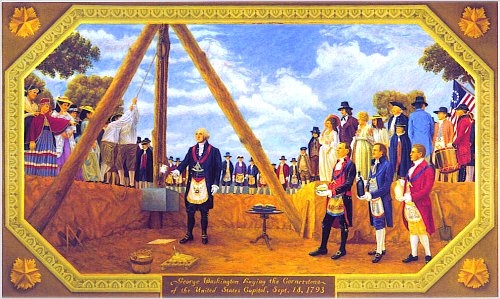 George Washington Laying The Corner Stone For The White House
by Bro. Joshua David Scruggs, 33°
Cornerstone ceremonies have played an important role in the history of our nation as well as Europe. George Washington laid the cornerstone of the nation's capitol building, both in his role as President of the United States and as a member of the Masonic fraternity. Masons laid the cornerstone of the Statute of Liberty structure in 1884 and contributed to its restoration in 1984. Benjamin Franklin, while Grand Master of Pennsylvania, established the tradition beginning with the corner stone laying of the state house in Philadelphia.
The Grand Master (or a designated officer of the state Grand Lodge) requests that all assembled come to order. Each Grand Lodge officer explains the jewel, and the duties, of their respective offices. Objects (memorials of the period in which the building was erected) are then sealed and deposited into the cavity of the cornerstone for posterity. These memorials typically include information about the building, public journals of the day, a copy of the history of the church, copy of the program for the service, a list of the Masonic Officers of the Day, and a few coins of currency. The ancient working tools of the stonemasons are then applied to the stone: the square, the level, and the plumb. With each application of the tools, the officers attest to the fact that the craftsmen have done their work correctly and with skill.
The cornerstone is then consecrated using the symbolism of corn, wine, and oil. These three elements have been used in dedications of buildings since the time of ancient Rome, and represent nourishment and plenty (corn), joy (wine), and peace, healing, and comfort (oil). The Masonic brethren then give the Masonic Grand Honors sign. The ceremony concludes with brief remarks by the Grand Master and the Pastor, followed by a closing prayer.
|
|
Page XVII | ||||
Face of the Flying Tigers
Chennault petitioned League City Lodge No. 1053 for the mysteries while he was stationed at Ellington Airfield near Houston. He was initiated as an Entered Apprentice on June 6, 1921, passed to the degree of Fellow Craft October 6, 1921, then requested dispensation from League City Lodge to learn the Fellow Craft work from an El Paso lodge (where he was then stationed). Subsequent to this, during a assignment to Hawaii, Brother Chennault was raised to the sublime degree of a Master Mason on Monday, May 24, 1926 in a courtesy degree conferred by Schofield Lodge No. 443, Territory of Hawaii for League City Lodge.1 He later said he was unable to really become active until he went to the Orient. He took his Scottish Rite Degrees in China in 1948 [32°,KCCH, Orient of China at Shanghai (in exile)] and was a member of Islam Shrine Temple of San Francisco. Claire Lee Chennault was born in Cleburne, Texas on September 6, 1890. His family moved to rural Louisiana when he was 5 years old. Claire attended Louisiana State Normal College from 1909-1911, where he enrolled in ROTC. He completed his education at Northwest State in 1912 and taught school in Louisiana for several years. Chennault joined the Army in 1917 and received a reserve commission. He completed flight training in 1919. The next several years found Chennault learning the finer points of pursuit2 aviation. During these years, He was stationed at various airfields, including Ellington Field. Conventional aviation wisdom of the day held that bomber aircraft would fly to the enemy country and "carpet bomb" military targets with such force and accuracy that nothing but light "mop up" operations would be needed. The role of the pursuits in preventing the bombers reaching their intended targets was played down. After all, the bombers had defensive armaments to repel pursuits. Chennault did not buy into the conventional theory. He had learned the underlying message that Voss, Udet, von Richtofen, and others had known and used to their advantage in the "Great War." He recognized that pursuits could well prevent the bombers from ever reaching their targets, and further, that trained, disciplined pilots flying pursuits could engage their counterparts and defeat them by using the strengths of their own aircraft to their advantage. In short, he had taken to heart the advice to "know thy enemy."
The open cockpit aircraft of the day plus heavy cigarette smoking combined to seal his fate with the Army Air Corps. In 1937, after 20 years flying service, Chennault was medically retired as a Captain because of severe hearing loss and chronic bronchitis. But he had another card to play... Generalissimo and Madame Chiang Kai Shek of China were trying to build an air force to resist Japan's aggression against an unprepared China. The Chinese had let the Italians design and implement their air force, and the results were disastrous. In 1937, Chennault accepted a contract to come to China for a 3-month evaluation of the Chinese air force with an option to extend the contract. It was the start of a long and rewarding relationship. Chennault found the condition of the Chinese air force was horrible. The Italians, intending to make the Chinese feel they were rapidly building an air force, carried obsolete and destroyed aircraft as functional, inflating the number of airworthy planes far beyond reality. In the last years before open hostilities broke out in Europe, the records indicated the Chinese Air Force consisted of almost 3000 planes and an equal number of pilots. Chennault was aghast to learn that of these 3000 planes, only 91 were airworthy, and that while all the pilots could land and take off adequately, none had been trained in air combat tactics The three-month evaluation period elapsed, as Chennault continued to work with the pilots to design a "modern" air defense with integrated intelligence and communications. Air bases were designed, runways laid out, and maintenance facilities built. Chennault and his tactics were beginning to produce positive results, and the Chinese kills slowly climbed. No longer were Japanese planes able to bomb and strafe with impunity. Chennault often watched the aerial battles from his personal Curtis Hawk 75, and while he never claimed a single aerial victory in China, his plane often returned to base with bullet holes. Given his disposition and competitive spirit, it seems likely that he engaged the Japanese on several occasions. Throughout 1938, Chennault helped the Chinese slow the Japanese advance by continually nibbling away at their air armada. The Chinese at this time were flying a mixture of mostly obsolete pursuits far inferior to Chennault's "personal" Hawk 75. Yet they continued to get kills.
|
|
Page XVIII | ||
Continued From Page XIV
Chennault flew to the US briefly at Christmas of 1939, returning to China in early February, 1940. Japanese bombing attacks there continued, and by October 1940 the French had allowed the Japanese to use airfields in French Indochina against the Chinese. In December, 1940 "the Gimo" asked Chennault if he thought the US would provide 500 American pilots and planes to be used against the Japanese. Chennault told him that 500 planes and pilots would be hard to secure because of the US' commitments to Europe, but that he believed that securing some quantities of slightly obsolete fighters and bombers would be possible, and that these would be significantly better than what the Chinese had at the time. Soon, "the Gimo" dispatched Chennault to the US to secure what planes and pilots he could.
It goes without saying that the base commanders were incensed to learn the civilians were there to steal their most experienced pilots, but they had no say in the matter. Two groups of recruits had left the US by ship by early July, including over 100 pilots and ground crew. Chennault himself left San Francisco on July 8 on the China Clipper, a 4-engine flying boat. Aboard the Clipper, Chennault recorded in his diary "For the first time in my battle against the Japanese… I had everything I needed to defeat them." The US consul in Rangoon reported on July 18, 1941 that 68 planes had arrived. Thirty-two had been equipped with general aviation radios and roughly half with machine guns. On July 28, the first 30 airmen arrived. In August, as the technicians at CAMCO worked to make his planes serviceable and to cobble together crude home made ring and post gun sights for them (the P-40B had no provision for gun sights), Chennault began training his pilots on everything from Chinese geography to Japanese aerial tactics. The pilots also learned about the Chinese air raid alarm system that worked much like the Australian coastwatcher network in the South Pacific. And they learned about the strengths and weaknesses of the P-40 and those of their enemy. Most important, they learned how to turn these to their advantage. The AVG consisted of three squadrons: the "Adam and Eves," the "Panda Bears." And the "Hells Angels," All were equipped with Curtis P-40B aircraft, rugged descendants of the Curtis Hawk radial engine planes of the early 1930s. Sleek fuselages and liquid cooled engines reduced drag and increased speed, giving these planes a top speed of 340 mph, a 60 mph edge over the Japanese Ki27, its main opponent. There were tradeoffs, of course. The P-40 could not turn with the Ki27 at low speed, but the P-40 had better armament and could absorb more punishment. It could also outrun the Japanese planes, and out dive them. Chennault trained the AVG to use the strengths to their advantage and minimize their weaknesses. The AVG pilots were still training when Pearl Harbor was attacked. They first met the Japanese in combat on December 20, 1941, and between then and the end of December they represented China well. In just the last 11 days of 1941, the AVG shot down 75 planes while losing only 2 pilots and 6 aircraft. With the attack on Pearl Harbor, of course, everything changed. The United States was thrust into the War. Victory after victory belonged to the Japanese. In early 1942, Chennault's AVG was one of the few bright spots in a sea of losses to the Japanese. In January 1942, the AVG took the war to the Japanese with strafing attacks on Japanese air bases. But the Japanese advanced, and in March, 1942 Rangoon fell. AVG planes were in such short supply that pilots regularly repainted plane numbers and other aircraft markings (like propeller spinners) to fool the Japanese into believing they fought against a much larger force. The ruse worked, as one enemy broadcast swore that Japan would sweep the "200 planes (of the AVG) from the sky." The AVG at the time had 31 flyable planes. Chennault described the AVG combat experience thusly: "Although the AVG was blooded over China, it was the air battles over Rangoon that stamped the hallmark on its fame as the Flying Tigers. …its strength varied between twenty and five serviceable P-40's. This tiny force met a total of a thousand-odd Japanese aircraft over Burma and Thailand. In 31 encounters, they destroyed 217 enemy planes and probably destroyed {another} 43. Our losses in combat were four pilots killed in the air, one killed while strafing and one taken prisoner. Sixteen P-40's were destroyed." The origin of the name "Flying Tigers" is uncertain. Before he left Louisiana in July of 1941 to return to China, Chennault asked friends to mail him any clippings they found about the AVG. Soon he was deluged with clippings. He and his men were astonished to find themselves becoming famous as the "Flying Tigers." Chennault himself stated, "How the term Flying Tigers was derived from the shark-nosed P-40's I will never know." The AVG had copied the shark's teeth on the planes' noses from illustrations in the India Illustrated Weekly of an RAF squadron in Libya. The Flying Tigers had no group insignia until Walt Disney's cartoonists designed the now-famous winged tiger flying through a large victory "Vee" toward the end of their operation. After just more than 6 months of action, the AVG was disbanded on July 4, 1942. The tiny group no military expert expected to last a month in combat had survived for seven, and had amassed an enviable kill ratio to boot! Chennault was reenlisted in the Army Air Corps as a Brigadier General. Their mission was taken on by the newly formed China Air Task Force of the USAAF, commanded by General Chennault. Then in March, 1943, the men and equipment of the AVG were incorporated into the 23d Fighter Group of the 14th Air Force as part of the expanding juggernaut that was the Allied war machine. General Chennault was promoted Major General and appointed to lead the 14th Air Force. The 14th helped break the back of the Japanese CBI effort by flying 650,000 tons of supplies and materiel to the forward troops "over the hump" by the end of the war. Where there were no nearby airfields, the supplies were either "free dropped" or dropped by parachute. In early 1944, the Japanese overran Chennault's bases, but by mid 1944, with air superiority firmly established, the Allied forces again controlled the skies. Overall, the combat record of the AVG was impressive. The AVG began with only 100 pursuit planes. They rarely had as many as 25 operational at any time, yet are credited with shooting down almost 300 Japanese planes with a loss of only 14 pilots in combat. The AVG and the RAF both fought in the skies over Rangoon with comparable sized forces. While the RAF barely broke even in the fray, the Flying Tigers shot down 15 planes per AVG loss. Just before the war ended, Chennault was forced to retire a second time from the USAAC in October, 1945. He later returned to China, purchased several surplus planes, and started Civil Air Transport, which flew materiel to the Nationalist Chinese in their struggle against Communism. This air service later became Air America (the "secret" CIA air service that moved covert men and supplies around the globe and were the planes that supplied the French at forward bases like Dien Bien Phu in Vietnam.)
After the war, Chennault continued to argue against Communism to the end. General Chennault died of lung cancer on July 27, 1958, a maverick "avenged." He is buried in Arlington National Cemetery. - Written By Sam Whitley, Grand Lodge of Texas History Committee
|
|
|

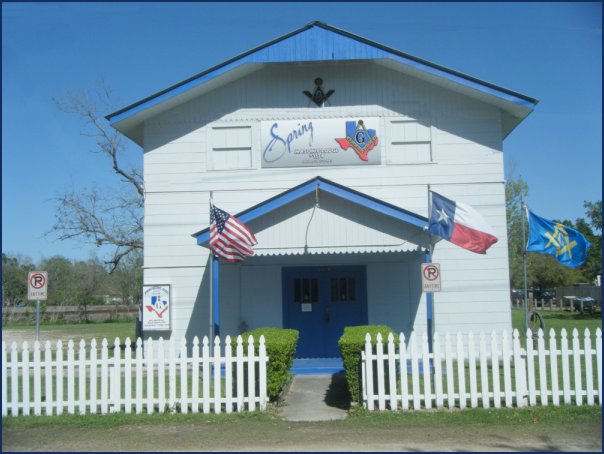
 So just what goes on in there?
So just what goes on in there? A lot of talking, mostly. Talking about anything... work, the family, hobbies, current events, vacation plans, our favorite sporting teams -- you name it. Masons are a fraternity of ordinary men, from all walks of life, and talk about the same things that anyone does. Many meetings center around an excellent meal, served by our stewards.!
A lot of talking, mostly. Talking about anything... work, the family, hobbies, current events, vacation plans, our favorite sporting teams -- you name it. Masons are a fraternity of ordinary men, from all walks of life, and talk about the same things that anyone does. Many meetings center around an excellent meal, served by our stewards.!